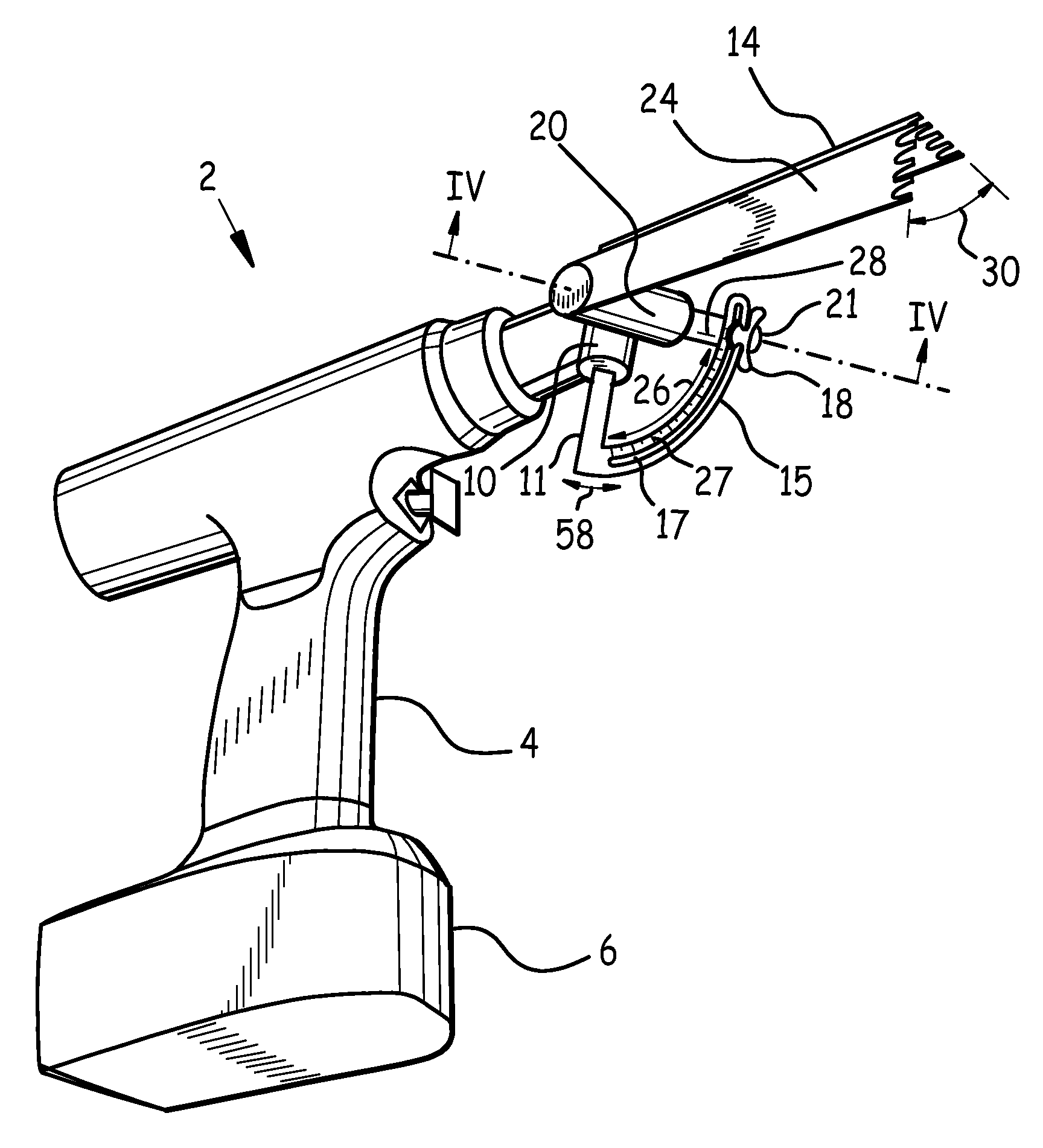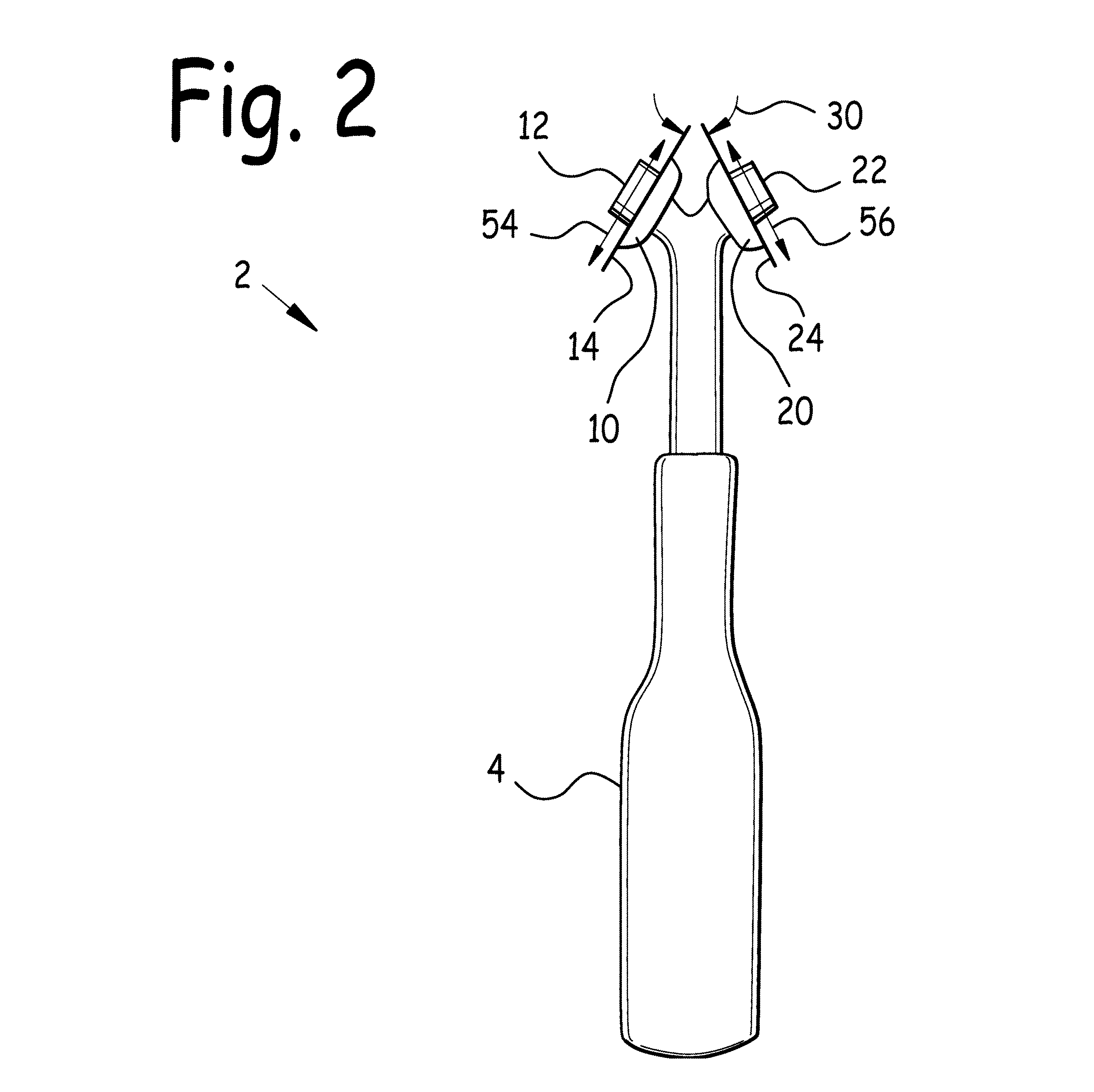Dual bladed surgical saw and method of use
a surgical saw and dual blade technology, applied in the field of surgical saws, can solve the problems of inability to make the sixty degree cuts required during austin bunionectomies, poor surgical procedure, and extreme accuracy, and achieve the effects of improving efficiency, improving accuracy and efficiency, and improving accuracy
- Summary
- Abstract
- Description
- Claims
- Application Information
AI Technical Summary
Benefits of technology
Problems solved by technology
Method used
Image
Examples
Embodiment Construction
[0027]Referring now to FIG. 1, we observe a right side isometric view of dual bladed surgical saw 2. Dual bladed surgical saw 2 incorporates first blade assembly 10 and second blade assembly 20 attached to saw body 4. First blade assembly 10 includes first blade 14 attached to first oscillator 12 at one end, and has saw teeth 16 at the other. Second blade assembly 20 includes second blade 24 attached to second oscillator 22 at one end, and has saw teeth 16 at the other.
[0028]In the example illustrated in FIG. 1, saw body 4 is an electric saw body with battery 6 connected to first blade assembly 10 and second blade assembly 20 through switch 8. When switch 8 is closed, first oscillator 12 and second oscillator 22 oscillate, which in turn cause first blade 14 and second blade 24 to reciprocate as indicated by arrows 50 and 52. While some of the figures herein depict electric saw bodies 4, it is intended to fall within the scope of this disclosure that any appropriate saw body and osci...
PUM
 Login to view more
Login to view more Abstract
Description
Claims
Application Information
 Login to view more
Login to view more - R&D Engineer
- R&D Manager
- IP Professional
- Industry Leading Data Capabilities
- Powerful AI technology
- Patent DNA Extraction
Browse by: Latest US Patents, China's latest patents, Technical Efficacy Thesaurus, Application Domain, Technology Topic.
© 2024 PatSnap. All rights reserved.Legal|Privacy policy|Modern Slavery Act Transparency Statement|Sitemap



